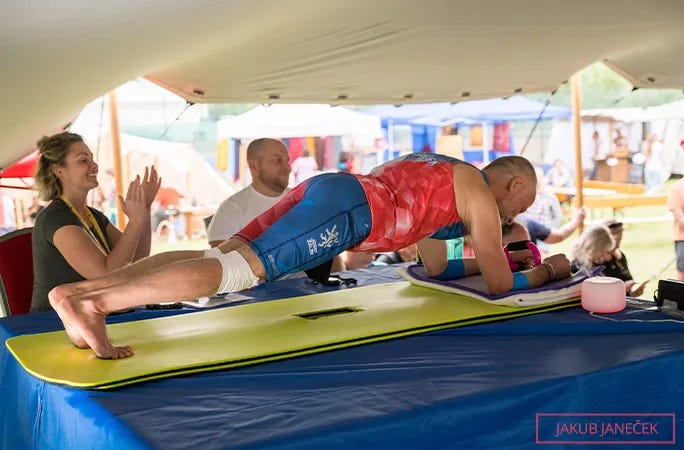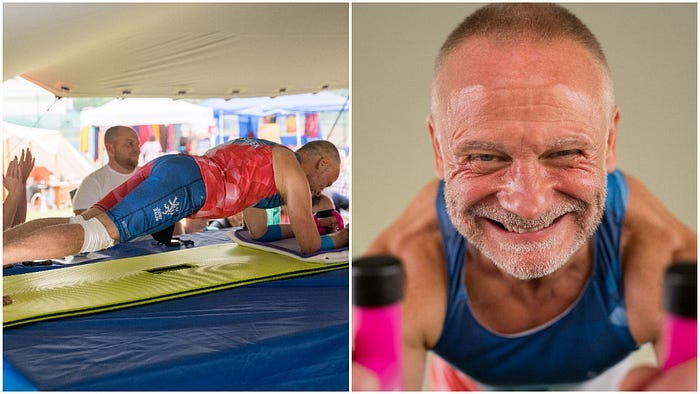I Did a 2-Minute Plank Every Day for 31 Days — Here’s What Happened, AI Cheatsheet, & More
No, I did not get the abs, but 4 things happened

Welcome to the PATHWAY — Edition #34
👋 Welcome to a 🔒 subscriber-only edition 🔒 of my 2x weekly newsletter. Each week, I share practical insights at the intersection of curiosity, growth, and AI to help you build a healthier, more productive, and wealthier life.
Today’s insights
If you ever get a feeling that time is moving too fast, put yourself in a plank position, and you will realize that it’s not moving at all. — Sanjay Yadav
Plank Guinness World record?
A ChatGPT cheatsheet (AI can help you create stunning presentations)
AI Tools (Bypass AI Detection)
Curiosity Corner (Iceberg)
AI Prompt Vaults (coming soon)
I Did a 2-Minute Plank Every Day for 31 Days — Here’s What Happened
Planking!
It looks comfortable, but if you’ve ever done one for over 30 seconds, you know how tricky that is.
The idea for this year is 30-day challenges. I’ve completed many 30-day challenges and am sticking to many of them, especially drinking 3–4 liters of water and drinking olive oil daily.
Inspired by my past 30-day challenges — ranging from drinking 3.78 liters of water daily to absolutely no sugar — I decided to tackle a new test: holding a 2-minute plank every day for 31 days.
Before we get into the weekly plank results, I’d want to mention that I’m a passionate hiker who enjoys spending as much time outside as possible. I’m also in my mid-30s and consider myself in good shape.
I am not obsessed with crazy diets or abs, just simple outdoor living, preferably in the mountains right next to the ocean with many trees. Okay, back to the plank challenge.
The goal was simple.
Strengthen my core
Improve my posture
Test my mental resilience
What followed was a month of shaky arms, burning abs, and surprising lessons about perseverance, discipline, and the power of tiny daily habits.
Here’s what happened.
Why a 2-Minute Plank?
I am a huge fan of the 2-minute rule to build sustainable habits.
I incorporated this rule to overcome procrastination.
For example, making the bed first thing in the morning, before even going to the washroom, has become a sustainable habit.
I decided to do the plank for 2 minutes to overcome the inertia. As I said, I did not do the plank at the same time each day but to build a habit of living a healthy life.
If you see something that needs doing, and it can be completed within two minutes, do it immediately. — Osei Bismark
Planking engaged my abs, shoulders, back, glutes, and even long legs.
The Science
According to a 2014 study, planks activate more core muscles than traditional crunches while reducing strain on the spine.
Holding a plank for 2-minutes has been suggested as a benchmark for core strength, with experts like Dr. Stuart McGill (a spine biomechanics professor) noting that it’s an ideal goal for preventing back pain.
Planks also help :
To improve your posture
To strengthen your lower back
To improve your balance
To build your mental endurance
Plank Guinness World record
According to Guinness World Records, Josef Šálek (54 years old) shattered the previous (9 hours, 30 minutes, and 1 second) plank World record after keeping the plank position for 9 hours, 38 minutes, and 47 seconds.
He set the new record for the longest plank. That is insane, but it may inspire someone.

But would doing it every day make a noticeable difference? Let’s dive into the exploration part!
Basic Rules of the Challenge
Hold a forearm plank for 2 minutes every day (no skipping). It’s okay to skip for a maximum of one day, but not two.
Proper form (hips level, core, absolutely no sagging).
No cheating — it had to be two continuous minutes, no breaks.
Track progress
Week 1:
The first few days?
Brutal.
I thought two minutes would be manageable since I was relatively active, but the shakes set in fast.
By the 1-minute mark, my arms were trembling, my core was screaming, and my brain was screaming louder:
WHY are we doing this?
I struggled to keep my posture straight for the first week. My elbows and upper body even felt like they were trembling.
I mentally prepared myself to hold the plank position for at least two minutes. I was able to hold a plank position in about 40–70 seconds.
When I Googled it, I discovered that 40 seconds or more in the first week is a good indicator of keeping moving. However, I miserably failed to meet the 2-minute objective for at least the first three days.
I must say everything is hard at the beginning.
Eureka! On the 4th day, I did a 120-second plank. My elbows and upper body did not tremble as much as they had in the first few days.
Week 2:
I began to push myself a little harder in week two because I had already achieved the 2-minute goal.
I tried to surpass the 2-minute goal but failed.
However, I managed to meet the minimum 2-minute target every day.
My abdomen felt like it was on fire, just like when you do crunches.
I also noticed that my back was becoming stronger and more in shape.
On day 15, I also attempted to do an extended plank, but it felt extremely difficult.
Around Day 10, something clicked for sure. My body wasn’t fighting the plank as much.
The two minutes felt more doable (though not easy).
I also started engaging my glutes more, which helped relieve pressure on my lower back.
Lesson learned: Planking is not just about abs — it’s full-body work like a compound exercise.
Week 3:
I never suspected I wouldn’t be able to do a 2-minute plank exercise in week 3.
I was actually hitting the 2.5–3.5 minute.
While doing a plank for three weeks, my back was getting in great shape.
I started to enjoy the exercise instead of struggling or feeling pain like I did during the first week.
In three weeks, I undoubtedly gained more core strengths.
Some days, I wanted to skip. Some days, I dreaded those 2+ minutes.
But I kept pushing, and by Day 20:
Biggest takeaway
The biggest takeaway is discipline beats motivation. I didn’t feel like planking daily, but I did it anyway.
Week 4:
This week, I went all in and achieved my new target of 4.5 minutes of plank.
My brain was telling me that I could do more, so I did.
My core, I must say, was becoming stronger day by day.
I could even feel my top two abs, and the burning was not as intense as it had been in the first three weeks.
I highly recommend taking the 30-day plank challenge if you want to strengthen your back and core.
During the final week, I noticed some unexpected changes:
My lower back pain disappeared.
My posture improved. I was standing taller without effort.
My workouts felt stronger. My core wasn’t giving out as quickly.
By Day 31, I held my longest plank: 4 minutes. It wasn’t just about the core anymore — it was a mental win.
Did I fail?
Yes, I failed to plank at the same time each day. However, I did the plank for at least 2 minutes within 24 hours. Most of the time, I do my 10–15-minute stretching regimen before lunch.



